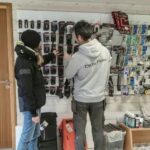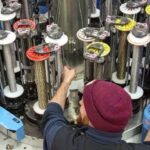Textile cables for sailboats: the best solutions for your boat with DEN-RAN
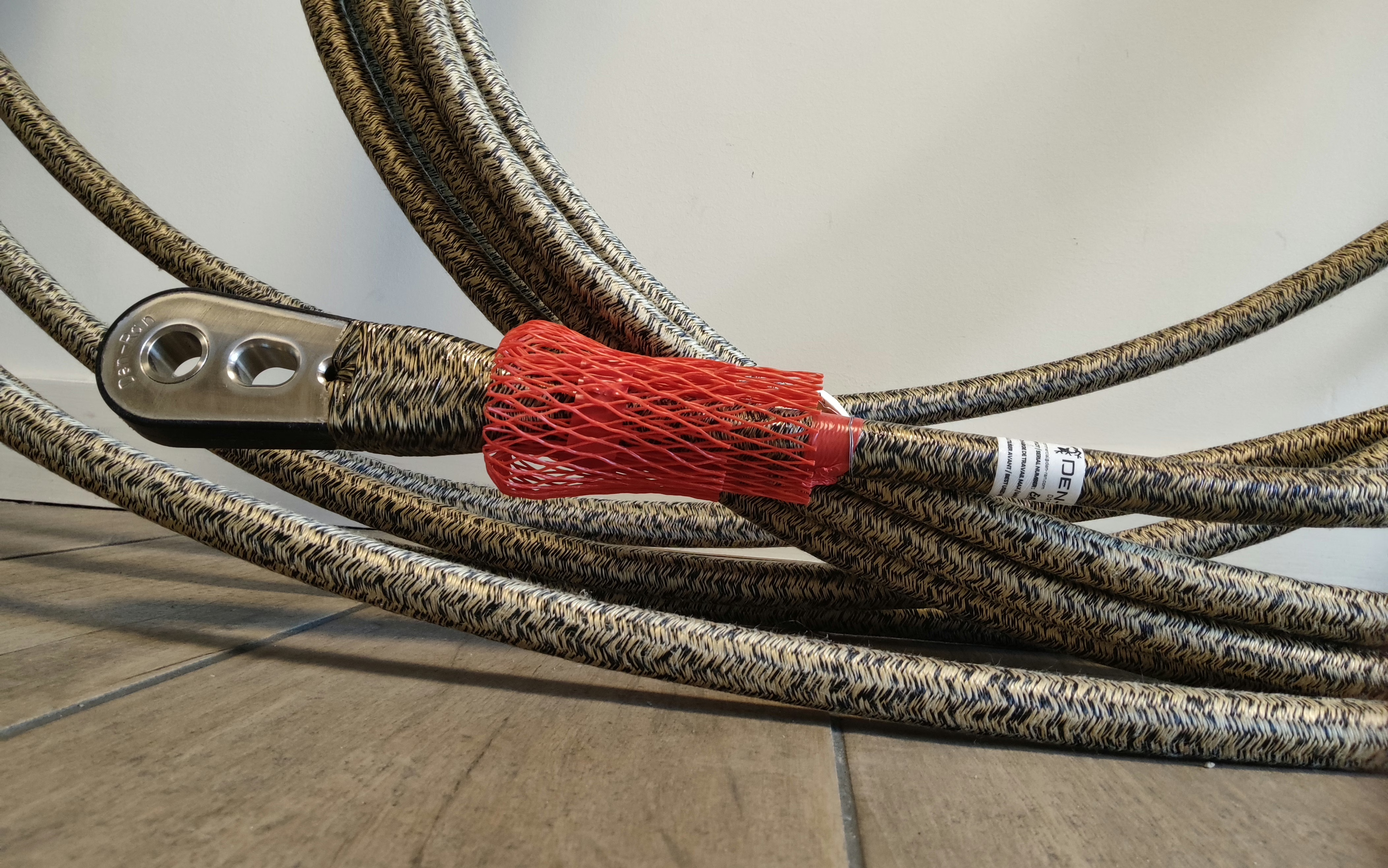
- Textile cables for sailboats: the best solutions for your boat with DEN-RAN
- Introduction to textile cables for sailboats
- Types of textile cables for sailboats and custom options
- Installation, cleaning, and maintenance of textile cables for sailboats
- Technological and ecological advances in textile solutions for sailboats
- Choose the performance with textile cables for your sailboat
Introduction to textile cables for sailboats
Textile cables have established themselves in recent years as a powerful alternative to traditional stainless steel cables in the field of sailing. Lighter, more resistant, and easy to handle, they offer numerous advantages to boaters as well as ocean racing professionals and shipyards.
But what are the different types of textile cables, and how to choose the one that suits your needs?
The characteristics of textile cables
The textile cables used on sailboats are designed from high-performance fibres such as Dyneema®, Vectran®, or even PBO®. These innovative materials offer:
- Exceptional resistance : At equivalent stiffness, textile cables have a much higher tensile strength than that of stainless steel.
- Reduced weight : Up to 88% lighter than stainless steel cables for the same resistance, they allow lightening the rigging and improving the boat’s performance. Indeed, the “weight in the tops” is a factor of the heel and therefore loss of performance. It has also become a major issue in recent years for offshore racers and builders.
- Greater flexibility : Easy to install, they do not require the use of a crimping machine.
- Increased durability : Resistant to UV, abrasion, and moisture, textile cables require little maintenance.
In addition to its mechanical performance, the textile cable stands out as a more environmentally friendly solution thanks to its lightness, durability, and potential recyclability. Opting for textile rigging means making a technical and eco-responsible choice.
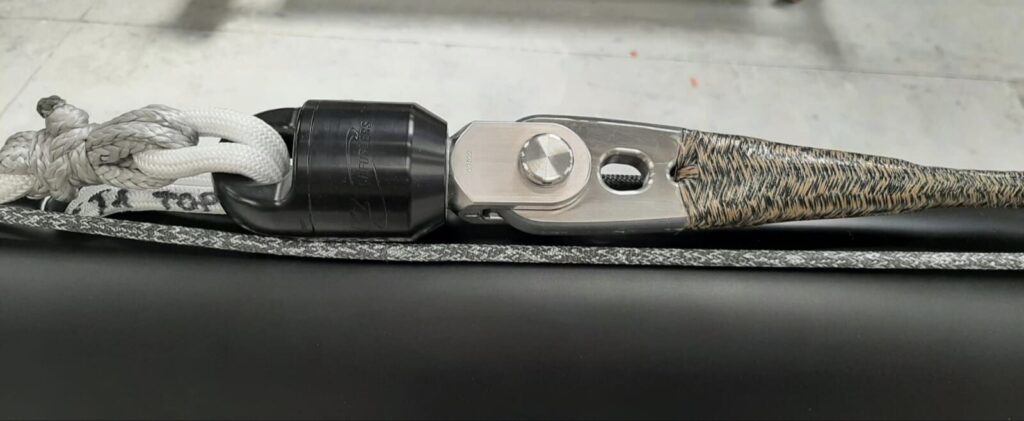
Comparison between textile cables and traditional cables
The choice between a textile cable and a stainless steel cable depends on several factors:
| Case study : lateral + stay of a Pogo 30 | Textile cable | Stainless steel cable |
|---|---|---|
| Weight | Very light 3-4 kg depending on the fiber used. | Heavy 12 kg approximately. |
| Maintenance | It requires regular monitoring. See the tips | It requires regular control |
| Lifetime | Recommended: 6 years or 30,000 mN Equivalent to a world tour. | Recommended: 10 years |

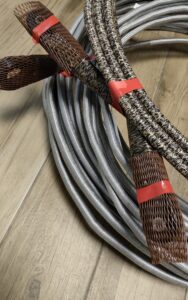
Longevity and durability
A textile cable has excellent resistance to UV and marine aggressions.
Moreover, unlike stainless steel cables, it does not corrode and presents no risk of injury due to broken metal wires.
If stainless steel cables remain a reference for certain uses, textile cables offer incomparable performance.La plupart des voiliers peuvent changer leur gréement dormant traditionnel pour un gréement dormant textile.
Did you know? DEN-RAN designs, develops, manufactures and installs textile cables in filament wound and anti-torsion. We are the only ones in France to master this process and to market it to measure. All production is located in Ploemel (56).
Types of textile cables for sailboats and custom options
Making the choice of textile cable for its rigging depends on many criteria: intended use (runners, shrouds, J1, J2, J3, etc.), desired strength, navigation conditions and terminations (hook, winder, etc.).
Several types of cables exist, each with its own specificities.
Materials commonly used
Textile cables for sailboats are made from synthetic fiber, among which are :
- Dyneema® (UHMWPE – Ultra-High Molecular Weight Polyethylene) is designated as the most resistant fiber in the world : Very light, extremely strong, and low extensibility, it is the reference material for modern rigging.
- Vectran® – (Liquid crystal thermotropic polyester – LCP): Very dimensionally stable and resistant to dynamic loads, it is appreciated for applications requiring high precision.
- PBO (Zylon® – Polybenzoxazole): High-performance with extreme rigidity and resistance, but sensitive to UV and moisture, requiring a protective sheath (resin).
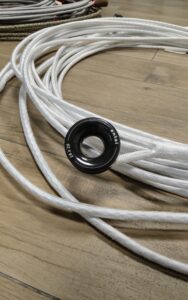
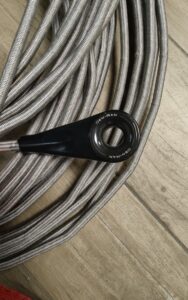

Fibres used by DEN-RAN : Dyneema®, PBO®, Dyneema®/Vectran®
The choice of material directly influences the performance and durability of the textile cable :
| Dyneema® | PBO® | Dyneema®/Vectran® |
|---|---|---|
| ✅ Extremely resistant and durable | ✅ Unmatched stiffness for textile, no creep | ✅ Extremely resistant and durable |
| ✅ Lightweight | ✅ Very lightweight | ✅ Lightweight |
| ✅ Resists fatigue and absorbs shocks | ❌ Sensitive to bending rays and UV | ✅ Resists fatigue and absorbs shocks |
| ❌ Slight creep (elongation of the fiber over time) | ❌ Not very durable | ✅ Dimensionally stable (no creep) |
| ❌ Sensitive to bending rays and UV, requires protection |
Did you know? DEN-RAN combines Dyneema® and Vectran® to optimize fiber performance and limit their drawbacks.

Advantages of Dyneema cables®
Dyneema® is today the most used fibre for textile cables of sailboats due to its numerous assets:
- Exceptional resistance : At equal weight, it is 15 times stronger than steel.
- Low elongation : It offers excellent stability under load, ideal for dormant rigging.
- Lightness : 80% lighter than stainless steel, it allows a significant gain in performance.
- Resistance : To UV and moisture, its durability in a marine environment is excellent, especially when it is sheathed for better protection.
Did you know? DEN-RAN uses Dyneema® SK99 trebled or UD (unidirectional).
In addition to their technical qualities, textile cables offer adaptability to different types of sailboats, from cruise ships to competition sailboats, but also to the boat industry.
Our textile cables are custom-built to meet the specific requirements of each boat with a wide range of possible variants (grafts for halyard or tack point, choice of sheath color, choice of termination…).
Accessories to complete your textile rigging
The effectiveness of a textile rig does not depend solely on the choice of cable : the accessories that accompany it play a key role in its performance and longevity.
Endings, protective sleeves, textile hooks… Each element contributes to the safety and proper functioning of the rigging.
An appropriate selection allows for optimizing the resistance of the cable and ensuring a durable installation.
Endings
| Endings for standing rigging | Endings for anti-rotating forestay (structural or not) |
|---|---|
| Friction rings and lashing lugs : Lighter allows more flexibility. | Anodized aluminum, stainless steel, or titanium lug : Molded for better fiber retention in torsion. Radiated hole for lashing (halyard or tack points) or graft. |
| Anodized aluminum, stainless steel, or titanium lug : Molded for a better fiber retention in torsion. Radiated hole for lashing (halyard or tack points) or graft. | Grafts/Loops : Adapts to the dimensions of the sail. |
| Cable/ mast connection via a transwire or a loop : Modular alternative. | Cable extension : Y-thimble to adapt the cable to several anchors. |
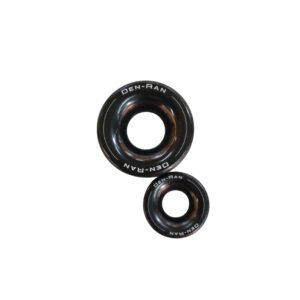
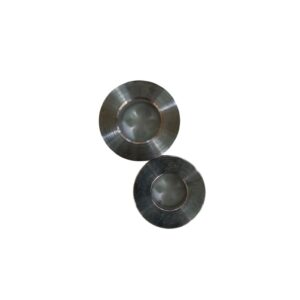

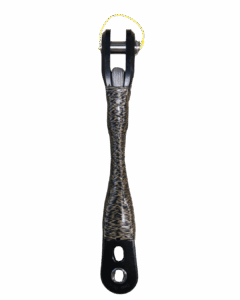
Finishing and protection accessories
- Coated Dyneema® sleeve
- Resin molding
- Anti-abrasion sleeve
- Stitched Dyneema® strap
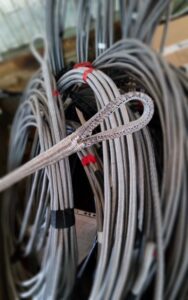
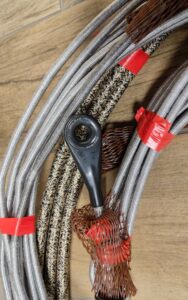
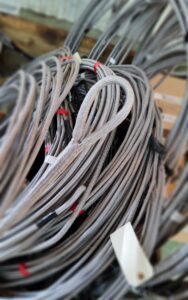
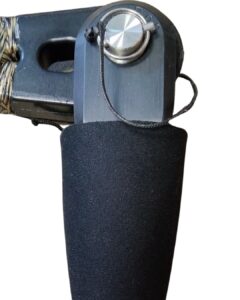
Installation, cleaning, and maintenance of textile cables for sailboats
The installation of a textile cable on a sailboat requires specific skills to ensure both the safety of the crew and the performance of the rigging. Unlike stainless steel cables, textile cables require a different approach to fixing, tensioning, and maintenance. Precise assembly optimizes the durability of the rigging while ensuring optimal adjustment of the mast and sails.
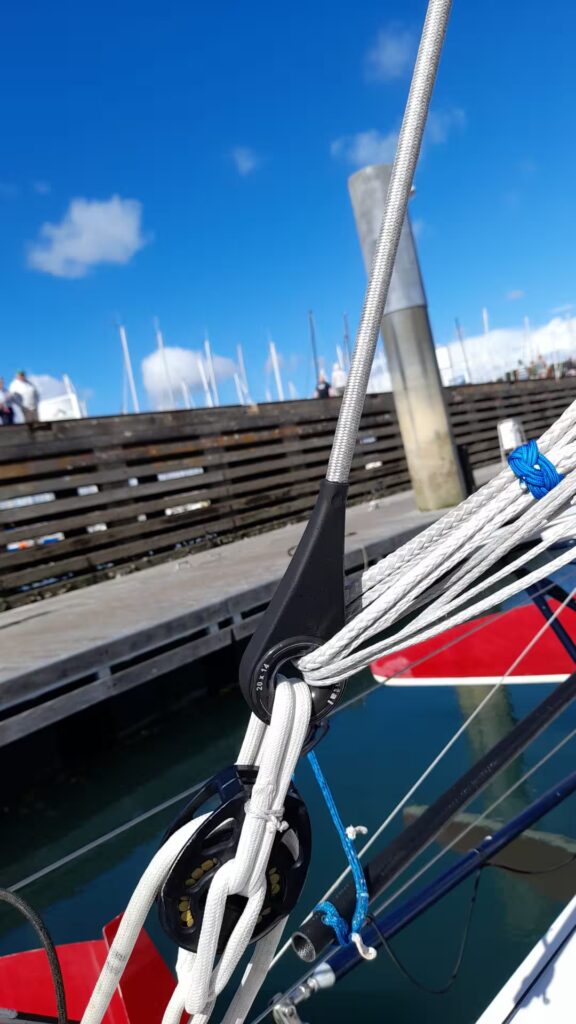
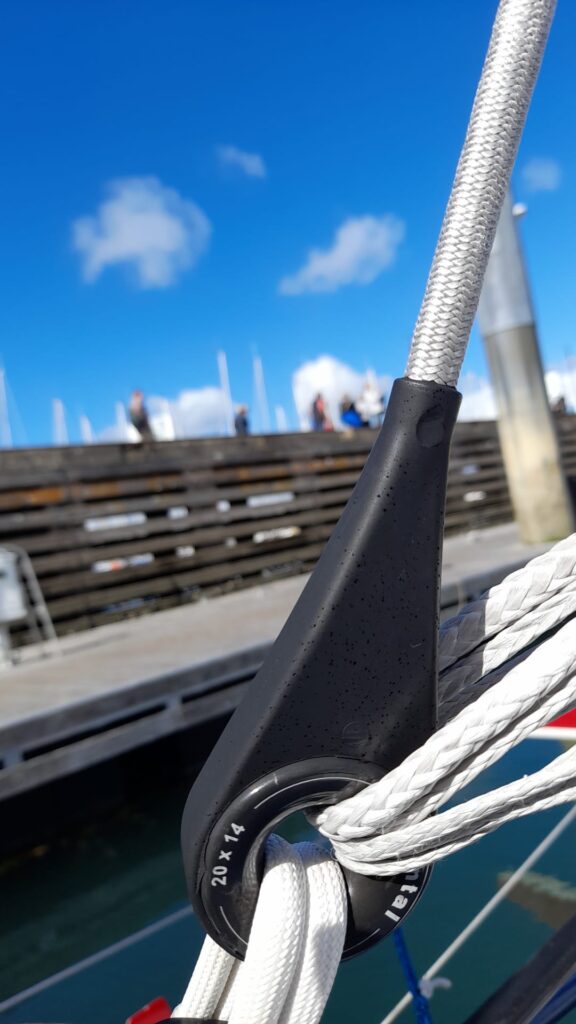
Installation steps
This process requires careful preparation. Thanks to our total mastery of the production of our textile cables, as well as the close collaboration of our design office, production, and technical teams, we guarantee an optimal installation perfectly adapted to each project.
After the manufacturing of your cable by us, we also accompany you in the installation phase, which is based on several steps essential to the success of the assembly.
Click on the arrows to learn more.
Progressive installation
Replace the cables one by one to avoid unbalancing the rigging.
Tension and adjustment
Apply the necessary voltage while respecting the recommended workloads.
Final check
Check the rigging alignment and test in navigation.
Safety tips for efficient installation
- Upstream, ensure the compatibility of endings with the existing chainplate and turnbuckle.
- Pre-stretching of textile cables is carried out in our workshop in Ploemel (56). Our cables are always pre-stretched beyond their theoretical workload; this allows the stabilization of the textile cable and decreases elongation.
- Always keep eye contact with the mast and be attentive to the sounds of the rigging.
- Use appropriate tools and never install alone.
It is essential to take into account the safety factor and to check the breaking loads provided by our teams, to avoid any risk of under- and over-sizing.
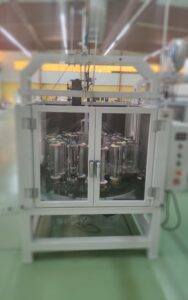

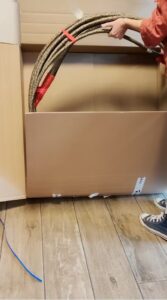
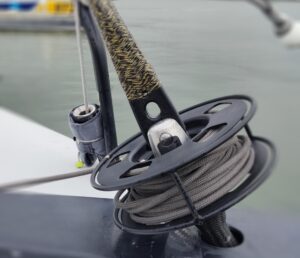
If textile cables are designed to be robust and durable, regular maintenance is essential to ensure their longevity and maintain an optimal level of performance.
Unlike stainless steel cables that require corrosion control, textile cables must be monitored to prevent premature wear due to friction, UV, or excessive loads. Proper maintenance extends the life of the rig and avoids premature replacements.
Did you know? DEN-RAN performs visual checks of standing and runnig rigging. Our technicians inspect a series of 68 checkpoints:
Mast : 40 points
Boom : 10 points
Standing rigging : 7 points
Furling system : 3 points
Adjustment of the mast : 8 points
Cleaning and regular maintenance
- Frequent visual inspection: Check the entire length of the cable, especially at friction and fastening points.
- Clean with fresh water to avoid salt and dirt accumulation.
- Check the tension after a long regatta, strong sailing conditions, and an offshore race.
- In case of doubt, do not hesitate to contact us.
Extend the life of the rigging
- Using protective sleeves on parts exposed to abrasion, DEN-RAN custom manufactures neoprene sleeves to protect the endings.
- Avoid excessive dynamic loads that can accelerate the wear of the textile.
- Store in good conditions if the rigging is dismantled out of season.
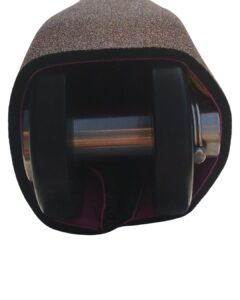
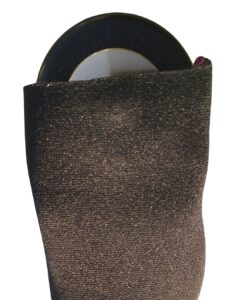

Common problems with textile cables for sailboats and how to solve them
Even though textile cables are designed to be strong and reliable, they are not free from problems. Wear, elongation, or even external aggressions can alter their performance over time. Fortunately, there are simple and effective solutions to extend their lifespan and avoid premature degradation. Identifying signs of wear and adopting good maintenance practices are the keys to durable rigging.
Identification of signs of wear
Click on the arrows to learn more.
Discoloration due to UV.
- Redo a sheathing pass.
Sticking at friction points.
- Redo a sheathing pass
Abnormal tension loss, cable elongation.
- Contact us to evaluate the solution to be provided.
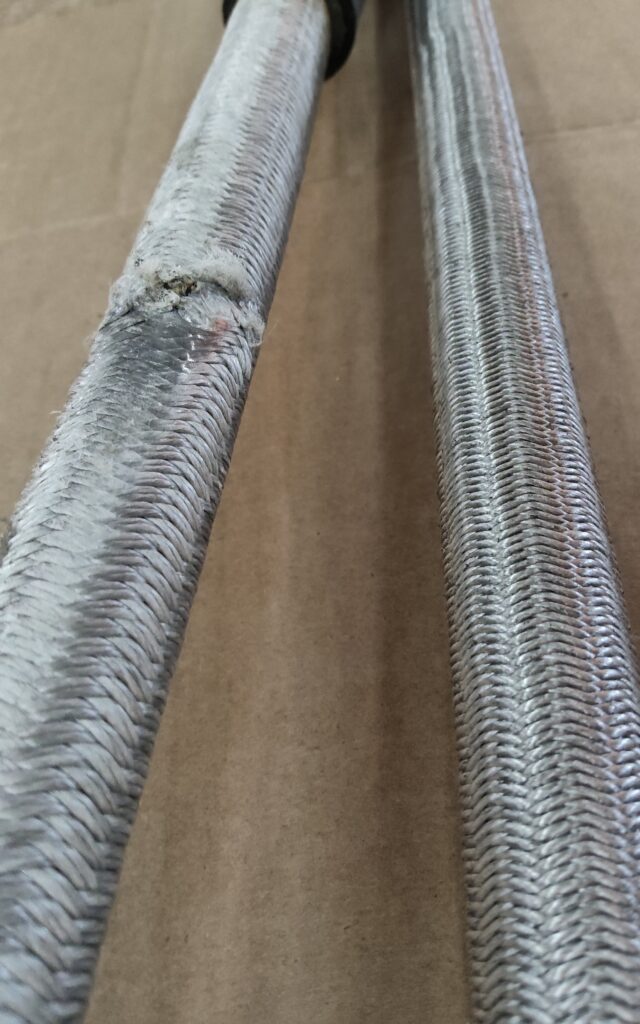


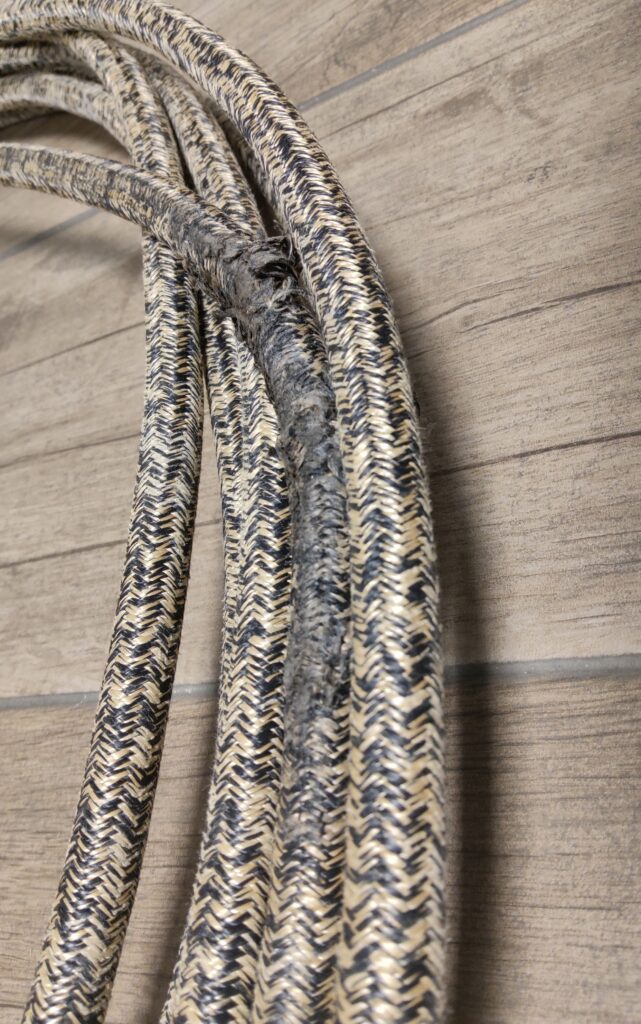
Solutions to elongation problems
- Pre-stretch beyond the workload before installation. (Carried out in our workshop.)
- Foresee upstream an adjustment range with a certain margin to be able to tighten the cable.
- Regularly check the tension and note the settings, dating them. Too much elongation is not normal.
- If that is not enough, change the fiber and switch to aramid (PBO® or Dyneema®-Vectran®, which flows very little)
Did you know it? DEN-RAN keeps track of all cables coming out of the workshop, each cable has a label that shows the batch number, maximum workload and expiry date.
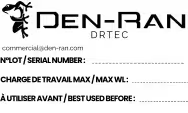
Technological and ecological advances in textile solutions for sailboats
The field of textile rigging is constantly evolving, with innovations aimed at further improving the resistance, durability, and ease of use of cables.De nouvelles fibres synthétiques, des traitements anti-UV avancés et des systèmes de surveillance des charges font partie des développements récents qui révolutionnent le monde du nautisme.
In the future, textile cables could even completely replace metal solutions, thus offering optimal performance with reduced environmental impact.
Recent innovations
- Hybrid and bio-sourced composite fibers.
- Monotoring system to measure tension, load in real time.
DEN-RAN markets the Smartlink® of Cyclops Marine; this sensor allows you to display static and dynamic load data live on your smartphone or instrument.
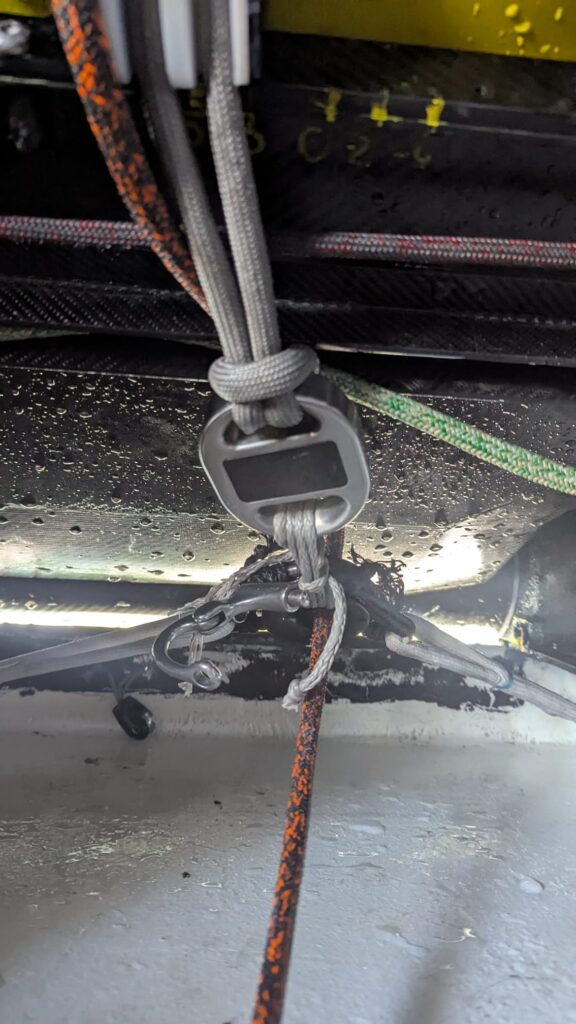
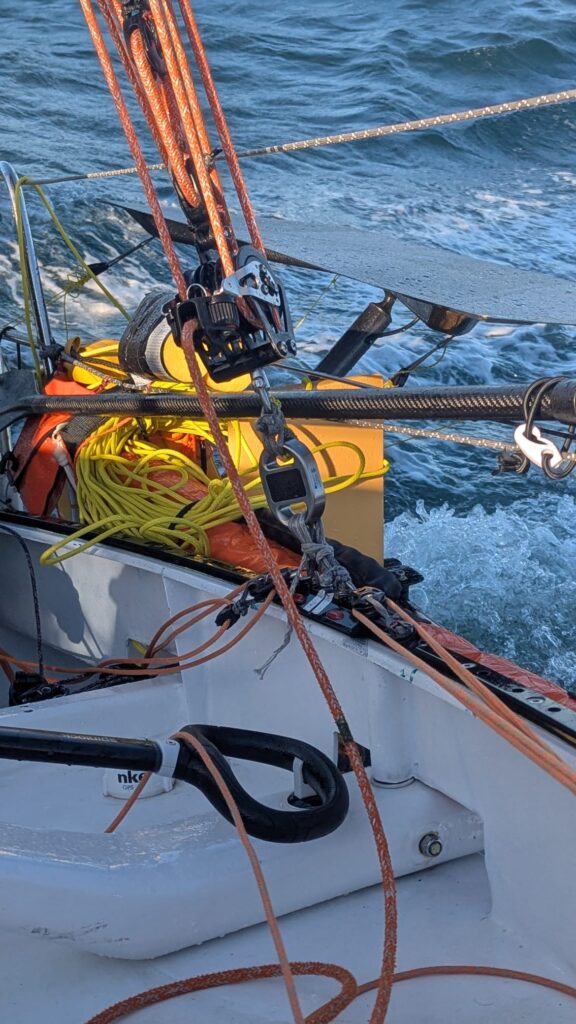
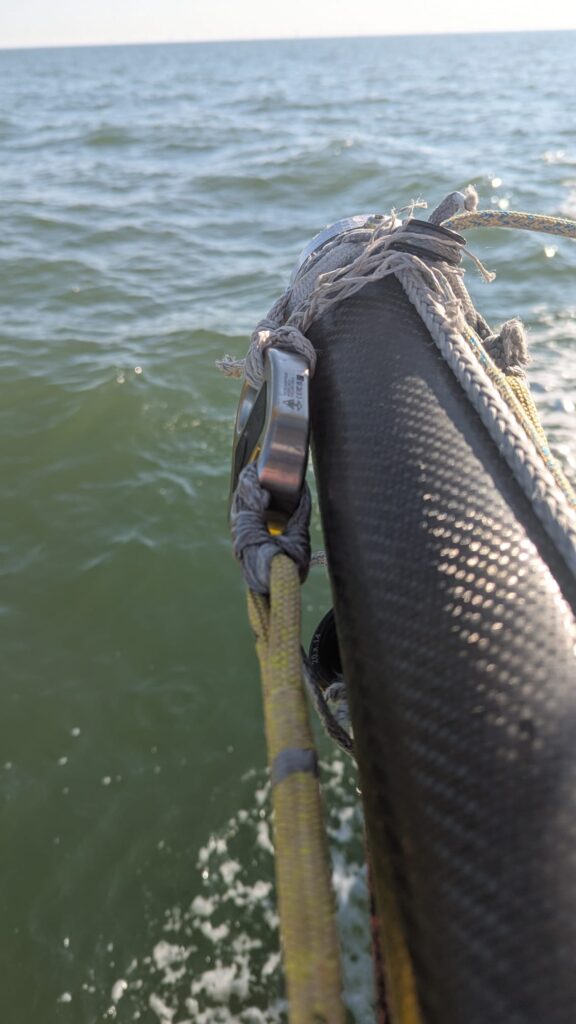
test on Mini 6.50 N° 1044
What the future holds
- Development of 100% recyclable cables.
- Optimization of manufacturing processes, reducing carbon footprint.
- Evolution towards all-textile rigging, removing steel from the deck to the mast.
With the rise of textile technologies in boating, more and more skippers are opting for lighter and more efficient solutions. But beyond weight and performance gains, the textile cable also stands out as a more environmentally friendly choice compared to traditional steel cables.
Low environmental impact
Textile cables have several ecological advantages:
- Lower CO2 emission : Their manufacture requires less energy than that of stainless steel cables, whose extraction and processing are very energy-intensive.
- Optimized transportation : their lightness reduces fuel consumption during transport and contributes to lightening the boats, thus reducing their carbon footprint.
- Recyclability and recovery of waste : some fibres, such as PBO®, have a recycling pathway; others, such as Dyneema®, are subject to recycling and reuse study programs to extend their life cycle.
- The Dyneema® has a carbon footprint 90% lower than that of conventional HMPE fiber.
Did you know? DEN-RAN recycles waste and obsolete products into PBO in a recycling sector specialized in this innovative fibre. The PBO thus reused transforms, for example, into heat-resistant gloves.

Choose the performance with textile cables for your sailboat
Adopting textile rigging for your sailboat means choosing a solution that is efficient, light, and durable. Thanks to technological advances, cables made of Dyneema®, Vectran,® or PBO® offer exceptional strength, low elongation, and better adaptability to demanding maritime conditions.
Whether it is for a complete standing rigging, a J2, a forestay, or shrouds, textile solutions allow you to optimize the weight and maneuverability of your sailboat while reducing environmental impact.
But to take full advantage of these advantages, the choice of accessories and careful installation are essential. Adapted terminations, protections, specific furling system… Every detail counts to ensure the reliability and longevity of your textile rigging.
Did you know? DEN-RAN, created in 2006 by Olivier Servettaz, is today a recognized company in innovative textile solutions. We manufacture textile anti-twist cables unique in France, according to a method that is suitable for us, filament wound.
Whether you are in Brittany or on the other side of the world, we realize with all our expertise your custom-made textile standing rigging.
Our cables are of high quality, tested and approved in real and extreme conditions.
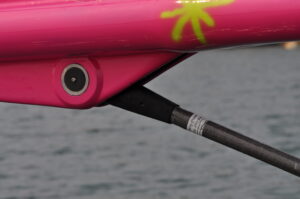
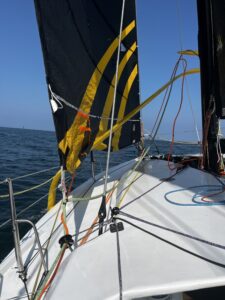

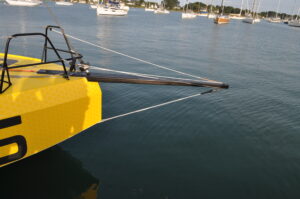
With DEN-RAN, optimize your performance and the safety of your sailboat with innovative and proven textile solutions!
If you want to add other questions to this FAQ, don’t hesitate to let us know in the comments!
Join us on the social networks and don’t miss any news from DEN-RAN. Don’t hesitate to share this article!


